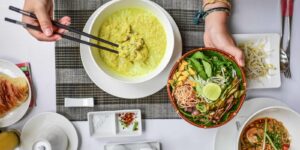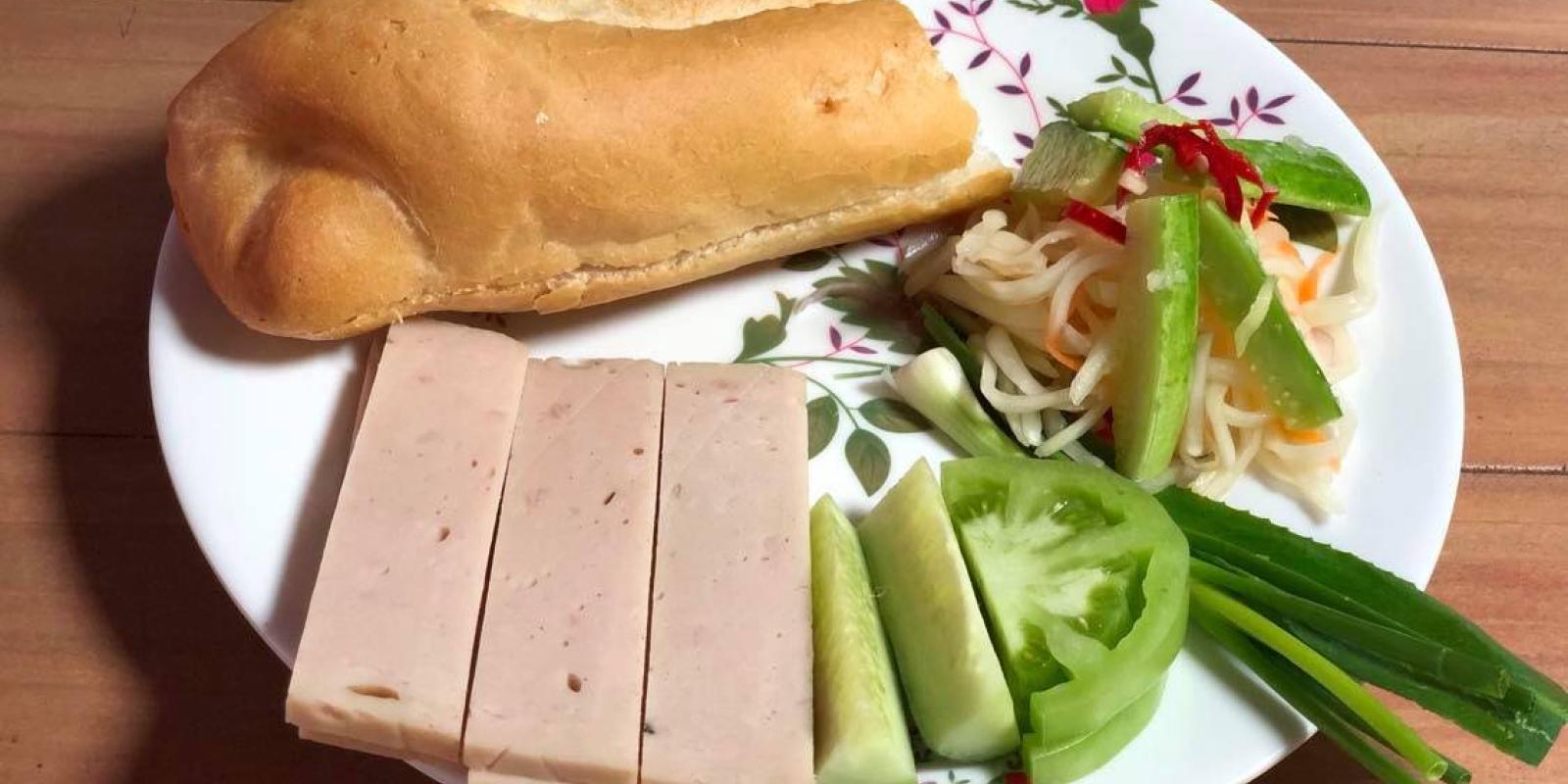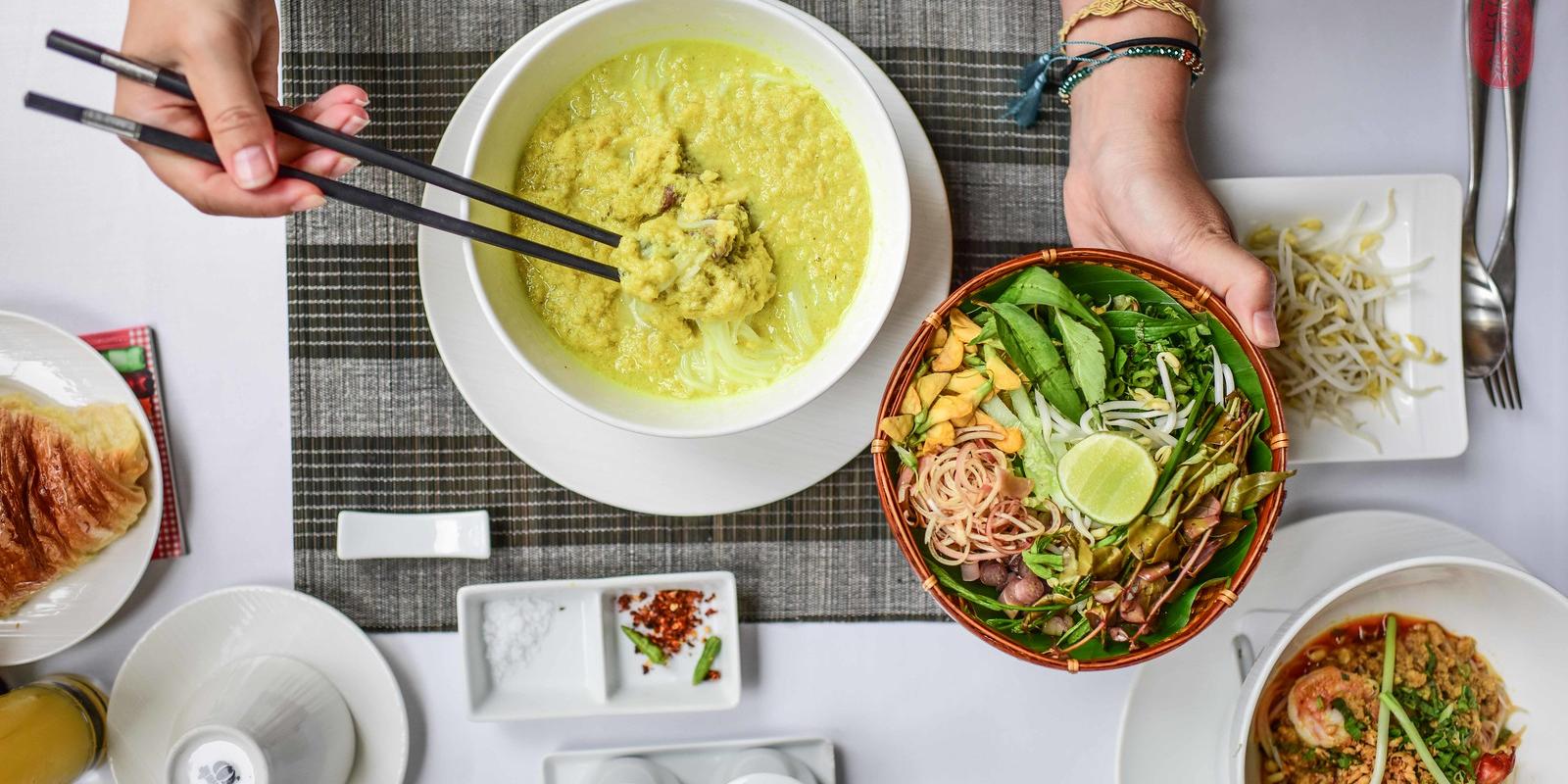From fragrant herbs and spices to unique cooking techniques, Cambodian food offers a delectable fusion of flavors that will tantalize your taste buds and leave you craving for more. As we travel through the diverse regions of Cambodia, we will explore the traditional dishes and ingredients that make Khmer cuisine truly special. From the famous fish Amok, a delicate curry steamed in banana leaves, to the hearty beef Lok Lak, marinated with a distinctive blend of spices, each dish tells a story of Cambodian history and culture. Join us as we uncover the secrets of Cambodia’s delicious cuisine, from bustling street food markets to fine dining establishments. Whether you’re a fan of spicy curries, fresh seafood, or exotic fruits, this gastronomic journey will surely inspire and ignite your love for Khmer cuisine. Prepare yourself for a feast of flavors and embark on this unforgettable culinary journey through Cambodia.
Historical and Cultural Influences on Khmer Cuisine
Khmer cuisine is deeply rooted in the rich history and diverse cultural influences that have shaped Cambodia over the centuries. The culinary landscape of Cambodia reflects the amalgamation of various traditions, including those from regional countries such as India, China, France, Thailand, and Vietnam. The Khmer Empire, which thrived from the 9th to the 15th century, played a pivotal role in establishing a culinary identity that would endure through time. The empire’s trade routes facilitated not only the exchange of goods but also the sharing of culinary practices and ingredients, which enriched the local cuisine.
The arrival of Indian and Chinese traders introduced new spices, cooking techniques, and ingredients, which further diversified Khmer food. For instance, the use of curry, a staple in Khmer cooking, can be traced back to Indian influence. The adaptation of these foreign elements into local dishes resulted in a unique culinary style that emphasizes balance, freshness, and harmony of flavors. Khmer cuisine often features a delicate interplay of sweet, sour, salty, and bitter tastes, which is a hallmark of the region’s food philosophy.
Additionally, the historical events, such as the Khmer Rouge regime in the late 20th century, significantly impacted the culinary traditions of Cambodia. Many recipes and cooking practices were lost during this tumultuous period, but the resilience of the Cambodian people has led to a revival and preservation of their culinary heritage. Today, Khmer cuisine stands as a testament to the country’s rich history, embodying the stories of its people and their enduring connection to the land.
Key Ingredients in Khmer Cuisine
The essence of Khmer cuisine lies in its key ingredients, which are carefully sourced to create dishes that are both flavorful and nutritious. Rice is the staple food of Cambodia, serving as the foundation for most meals. Jasmine rice, known for its aromatic qualities, is particularly favored and is often served alongside a variety of dishes. Additionally, rice noodles are commonly used in soups and salads, showcasing the versatility of this vital ingredient.
Fresh herbs and spices play an integral role in flavoring Khmer dishes. Ingredients such as lemongrass, kaffir lime leaves, and galangal contribute to the vibrant aromas that characterize Cambodian cooking. Fish sauce, a staple in Southeast Asian cuisine, is frequently used to add depth and umami to dishes. The use of palm sugar, derived from the sap of palm trees, provides a natural sweetness that balances the savory elements in many recipes.
Moreover, Cambodia’s location along the Mekong River and the Gulf of Thailand allows for an abundance of fresh seafood, which is prominently featured in the cuisine. Fish, shrimp, and crab are often used in curries, soups, and salads, enhancing the dishes with their distinct flavors. Together, these key ingredients reflect the natural bounty of Cambodia and the importance of fresh, local produce in creating authentic Khmer meals.
Traditional Khmer Dishes and Their Recipes
One of the standout dishes in Khmer cuisine is Fish Amok, a fragrant curry made with fish, coconut milk, and a blend of spices. Traditionally steamed in banana leaves, this dish is a true representation of Cambodian flavors. The preparation begins with creating a spice paste that includes ingredients like lemongrass, turmeric, and garlic, which are blended together. The fish is then marinated in this paste, combined with coconut milk, and steamed until tender. The result is a creamy, aromatic curry that is often served with rice.
Another beloved dish is Beef Lok Lak, a stir-fried beef dish that is marinated in a mixture of soy sauce, lime juice, and black pepper. The meat is quickly cooked over high heat to retain its tenderness and is typically served with fresh vegetables and a dipping sauce made from lime juice and salt. This dish showcases the balance of flavors in Khmer cuisine, with the zesty lime complementing the savory beef perfectly.
Samlor Korko or Cambodian Ratatouille (Stirring Soup) is a hearty vegetable soup often made with catfish, pork, chicken, or quail meat; an assortment of vegetables like eggplant, pumpkin, and leafy green, fruits, and herbs; Prahok (fermented fish paste), Kroeung (Herbal Paste), roasted grounded rice. It is a traditional Cambodian soup considered one of Cambodia’s national dishes.
Khmer Noodle Soup, or Num Banh Chok, is a popular breakfast dish that consists of rice noodles topped with a flavorful fish gravy (Green Curry) made from fermented fish and various herbs such as lemongrass, turmeric, etc. Served with an abundance of fresh vegetables such as cucumber, bean sprouts, and banana flower, this dish is not only satisfying but also represents the communal aspect of Cambodian dining, where meals are often shared among family and friends.

Popular Street Food in Cambodia
Street food is an essential part of the culinary culture in Cambodia, offering a vibrant array of flavors and experiences. One of the most popular street foods is Bai Sach Chrouk (Grilled Pork and Rice), which consists of grilled pork served over a bed of fragrant rice. The pork is marinated in a mixture of garlic, soy sauce, and coconut milk, then grilled to perfection. Accompanied by pickled vegetables and a side of broth, this dish is a favorite among locals and visitors alike.
Another street food gem is Num Pang Sarch, a Cambodian sandwich that features a crusty baguette filled with a variety of ingredients, including grilled meats, pickled vegetables, and spicy sauces. The French influence is evident in this dish, as the baguette reflects the colonial history of Cambodia. Each vendor offers their unique twist, making Num Pang a delightful and portable option for those on the go.
Fried Tarantulas, while not for the faint of heart, are a popular snack in certain regions of Cambodia. Fried until crispy, these arachnids are often seasoned with garlic and salt, offering a crunchy texture and a unique flavor experience. Street vendors selling fried insects showcase the adventurous spirit of Cambodian street food, enticing curious eaters to try something new and exciting.

Regional Variations in Khmer Cuisine
Khmer cuisine is not monolithic; it varies significantly across different regions of Cambodia, influenced by geographical factors and local ingredients. In coastal areas, seafood takes center stage, with dishes featuring fresh fish, shrimp, and crab being commonplace. The coastal city of Sihanoukville is known for its seafood markets, where locals enjoy dishes like Pepper Crab, cooked with Kampot pepper, which is renowned for its quality and flavor.
In the central plains, where rice cultivation is abundant, dishes often highlight grains and vegetables. One notable dish is Kuy Teav, a noodle soup that varies from region to region. In Phnom Penh, it is typically served with beef or pork, while in the countryside, it may be prepared with seafood or chicken. The versatility of Kuy Teav makes it a beloved comfort food across the nation.
In the northern regions, the cuisine tends to be spicier and heartier, featuring ingredients such as wild vegetables and game meats. Dishes like Bamboo Sticky Rice are popular, showcasing the use of bamboo as both a cooking vessel and ingredient. This regional variation reflects the diverse agricultural practices and natural resources available in different parts of Cambodia, contributing to the overall richness of Khmer cuisine.
Famous Khmer Desserts and Beverages
Khmer desserts are a delightful conclusion to any meal, often featuring natural ingredients such as coconut, rice, and tropical fruits. One of the most famous desserts is Sticky Rice with Mango, where sweet sticky rice is paired with ripe mango slices and drizzled with coconut milk. This dish exemplifies the balance of flavors and textures that Khmer sweets are known for, with the creaminess of the coconut complementing the sweetness of the mango.
Another popular dessert is Num Ansom Chek, a traditional rice cake filled with banana and wrapped in banana leaves. Steamed to perfection, this sweet treat is often enjoyed during special occasions and festivals. The combination of soft rice and sweet banana creates a comforting dessert that resonates with Cambodian culture.

Cambodian Donuts (Num Korng) and its friends are types of Cambodian desserts and snacks. Num Korng are soft and chewy on the inside and deliciously crunchy on the outside, with a mildly sweet sesame flavor.

Cambodian Sesame ball, literally known as Num Krouch in Khmer, is one of the best friends to Num Korng. Their texture is soft and chewy. Traditionally, there are two flavors: salty fillings (soybean fillings) and sweet fillings (coconut fillings). In Cambodia, in order identify which one is salty or sweet fillings, we look at the topping. If this cake is topped by black sesame and white sesame, they are sweet fillings and salty fillings, respectively.

Num Pong Ansorng is another best friend to Num Korng (Cambodian Donuts). This soft and chewy cake is made from glutinous rice flour mixed with finest rice flour and filling with soybean on the inside and a sugar mixture on the outside.
Khmer Cooking Techniques and Utensils
Khmer cooking techniques are rooted in simplicity and emphasize the natural flavors of ingredients. One of the most common methods is steaming, which is often used for preparing dishes like Fish Amok. Steaming preserves the nutrients and flavors of the ingredients, resulting in a healthy and aromatic meal. Additionally, grilling is a popular technique, especially for meats and seafood, allowing for a charred exterior while keeping the insides tender and juicy.
Stir-frying is another prevalent cooking method in Khmer cuisine, particularly for dishes like Beef Lok Lak. Quick cooking over high heat ensures that the ingredients retain their color, texture, and nutritional value. This technique is often used in conjunction with the use of a wok, a versatile utensil that allows for easy tossing and mixing of ingredients.
Khmer kitchens are typically equipped with basic utensils, including clay pots for slow cooking, bamboo steamers for steaming, and mortar and pestles for grinding spices. The mortar and pestle, in particular, are essential for creating spice pastes, which form the flavor base for many dishes. These traditional tools reflect the emphasis on fresh, handmade ingredients in Khmer cooking, showcasing the reverence for culinary heritage that persists in Cambodian kitchens today.
Khmer Culinary Traditions and Rituals
Culinary traditions in Cambodia are often intertwined with cultural and religious practices, reflecting the significance of food in social and family gatherings. One of the most important rituals is the Choul Chnam Thmey, the Khmer New Year, during which families prepare elaborate feasts to celebrate the occasion. Traditional dishes such as Prahok Ktis, a fermented fish dip, are served alongside a variety of fresh fruits and sweets, symbolizing abundance and good fortune for the coming year.
Family meals hold great importance in Khmer culture, with gatherings often centered around a shared table. The act of preparing and sharing food is seen as a way to strengthen bonds and foster connections among family members. It is common for families to come together for significant events, such as weddings and birthdays, where food plays a central role in the celebrations.
Furthermore, food offerings to ancestors are a customary practice in Cambodian households. Families often prepare special dishes to honor their ancestors during religious ceremonies, showcasing their respect and gratitude. This ritual not only reinforces cultural ties but also emphasizes the role of food as a medium for expressing love and remembrance within Cambodian society.
Embracing the Flavors of Khmer Cuisine
Exploring Khmer cuisine is akin to embarking on a journey through Cambodia’s rich history and culture. Each dish tells a story, reflecting the influences of various civilizations and the resilience of the Cambodian people. From the fragrant spices of Fish Amok to the comforting flavors of Beef Lok Lak, Khmer food offers a diverse palette of tastes and experiences that are sure to delight anyone who indulges in it.
As we traverse through bustling street markets, vibrant food stalls, and family kitchens, we discover the heart and soul of Cambodia expressed through its culinary traditions. The emphasis on fresh, local ingredients and the communal aspect of dining highlight the importance of food as a source of connection and celebration in Cambodian culture.
Ultimately, embracing the flavors of Khmer cuisine is an invitation to not only savor the exquisite tastes but also to appreciate the rich cultural tapestry that binds the people of Cambodia. Whether you are a seasoned food enthusiast or a curious traveler, the journey through Cambodian gastronomy promises to be an unforgettable experience that ignites a passion for the vibrant flavors of this enchanting country.



